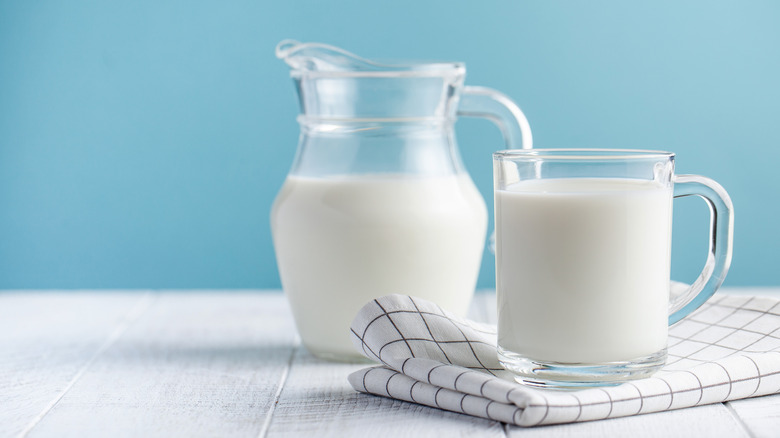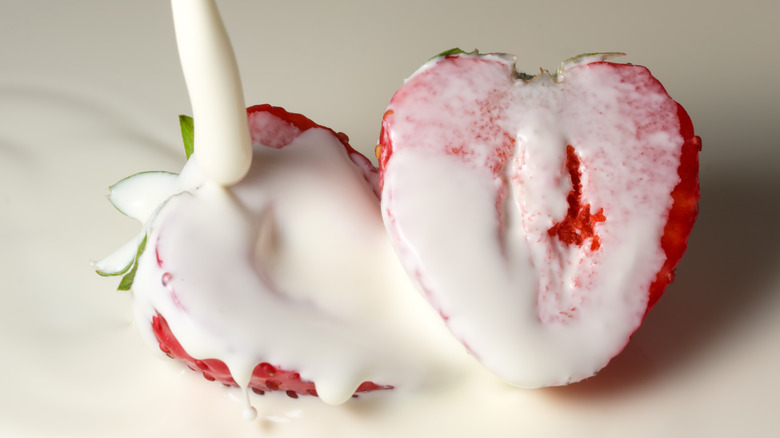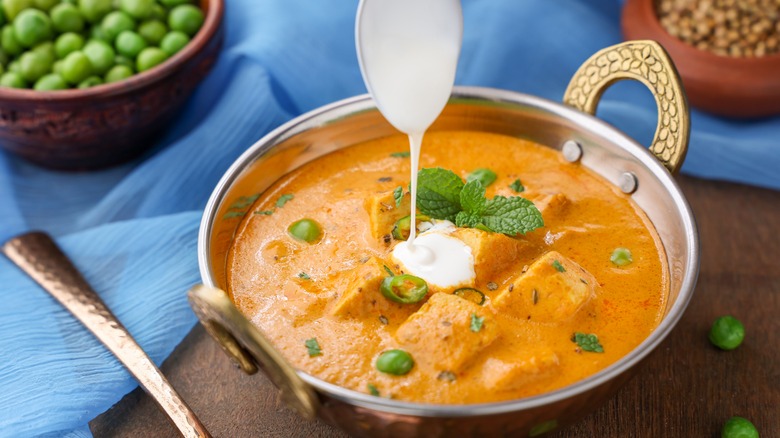The Difference Between Half-And-Half And Light Cream
Milk, cream, butter, yogurt, and cheeses are some of the world's biggest cravings. No, seriously: Imagine not having cheese on your pizza, sandwich, or French onion soup, or your Starbucks and Dunkin' Donuts without heavy cream. And don't get us started on where we'd be if we didn't have butter — doesn't the thought send shivers down your spine? We love dairy products with a passion and have for thousands of years.
According to Organic Valley, dairy dates back to 8,000 BCE in an area of the world we now consider Turkey. Whether by accident or miracle, milk was transformed and has taken on different levels of thickness, fattiness, and flavor, creating a new corner of the food pyramid by the clever hands of our ancestors.
Now, many of us enjoy the fruits of our ancestor's labor by pouring oodles of half-and-half into our lattes and cappuccinos and crowning ice cream with a dollop of whipped cream. But though we love to use milk and cream in our everyday lives, there are so many closely related products that it's hard to tell them apart — and know what exactly they should be used for, which is an issue people are running into with half-and-half and light cream.
How they differ
Not everyone can tell the difference between the creams they buy at the grocery store. Usually, they will just pick whatever cream product is the cheapest without giving it much more thought unless the recipe they are using is specific about what it requires. That being said, it is useful to understand the products you're buying because they could change the outcome of your meal.
When it comes to half-and-half and light cream, there are a few key differences to keep an eye out for. Real Simple reports that the United States Food and Drug Administration (FDA) requires cream containing between 18% and 30% milkfat be labeled as " light cream." Light cream is fantastic for coffee and used in things like glazes, icings, or other sweet toppings because of its high-fat content. But because of the higher fat content, it has the potential to curdle.
On the other hand, allrecipes says that half-and-half is defined as having between 10.5% and 18% milkfat, making it less fatty than light cream. This difference in fat could end up affecting the density of your recipes and if you switched one out for the other, it might result in a too-thin or too-thick texture.
Swapping one for the other
Just because half-and-half and light cream have different fat content doesn't mean they can't be swapped out, it just means that if you have to, you might get a different-than desired result or you'll have to make some adjustments. According to The Pioneer Woman, half-and-half is usually made using light cream. So, if a recipe calls for half-and-half, feel free to combine any light cream you have with equal parts whole milk. This should result in a fat content somewhere between the classic half-and-half milkfat content.
Now, if you have half-and-half but need light cream, that's when things become a bit tricky. America's Restaurant says light cream is traditionally heavier than half-and-half and has more fat, so if your recipe requires a specific amount of fat that the cream provides, the half-and-half won't make the cut. However, half-and-half does swap out with light cream fairly well if all that is important is that the meal you're using it in just needs a smooth, creamy consistency.
The swap between half-and-half and light cream shouldn't hurt, but you might notice a subtle difference.


